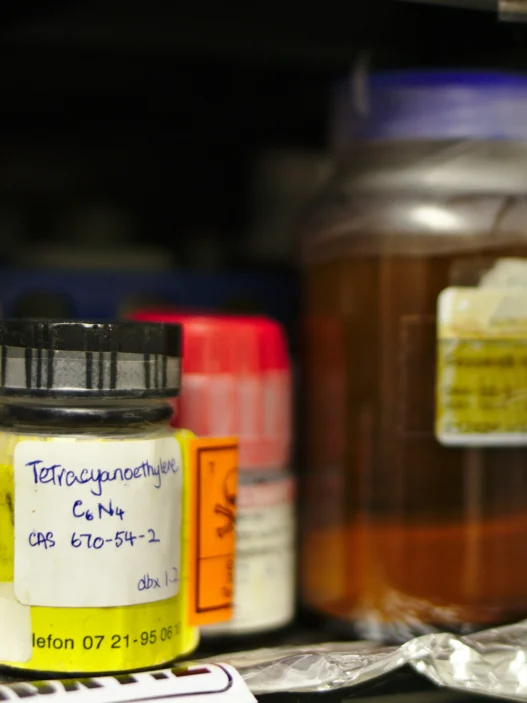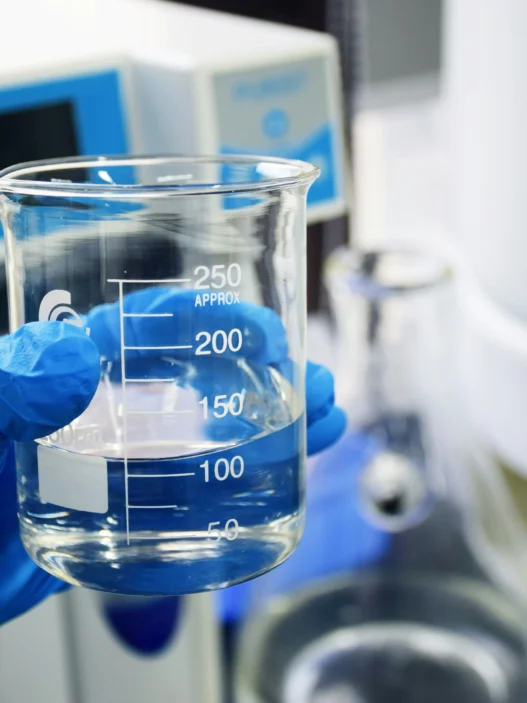2-Aminopyridine is a chemical compound that has significant relevance to everyday life due to its wide range of applications in various industries. It is commonly used in the production of pharmaceuticals, dyes, pesticides, and herbicides. Additionally, 2-Aminopyridine plays a key role in the synthesis of important intermediates for the manufacturing of agrochemicals and pharmaceuticals. Its versatility and functionality make it a valuable compound in modern society, impacting numerous aspects of daily life from healthcare to agriculture.
Table of Contents:
- 💡 Commercial Applications
- ⚗️ Chemical & Physical Properties
- 🏭 Production & Procurement
- ⚠️ Safety Considerations
- 🔬 Potential Research Directions
- 🧪 Related Compounds
💡 Commercial Applications
2-Aminopyridine, a derivative of pyridine, has a variety of commercial and industrial applications. It is commonly utilized as a building block in the production of pharmaceuticals, agrochemicals, and dyes. Its versatility as a precursor in organic synthesis makes it an important compound in the chemical industry.
In terms of drug and medication applications, 2-Aminopyridine has been studied for its role as an anti-inflammatory agent. Research has shown its potential in inhibiting certain enzymes involved in inflammation, making it a promising candidate for the development of new medications. Additionally, 2-Aminopyridine derivatives have shown activity as antiviral agents, highlighting their potential in the field of medicine.
⚗️ Chemical & Physical Properties
2-Aminopyridine is a white crystalline solid with a faint odor. It is a heterocyclic amine that is used in organic synthesis as a building block for pharmaceuticals and agrochemicals.
The molar mass of 2-Aminopyridine is 94.13 g/mol, with a density of 1.097 g/cm3. This places it in a similar range of molar mass and density as common food items such as sugar and salt.
2-Aminopyridine has a melting point of 62-65 °C and a boiling point of 244-247 °C. This compares to common food items such as butter and chocolate, which have lower melting points but higher boiling points.
2-Aminopyridine is soluble in water and has a low viscosity. This contrasts with common food items like oil and honey, which have lower solubility in water and higher viscosity.
🏭 Production & Procurement
2-Aminopyridine is typically produced through the reaction of pyridine with ammonia in the presence of a catalyst. This process allows for the formation of the desired compound with high purity and yield. The resulting 2-Aminopyridine is then separated and purified using various techniques such as distillation or crystallization.
The procurement of 2-Aminopyridine can be achieved through a variety of methods, including direct purchase from chemical suppliers or pharmaceutical companies. The compound can be transported in either liquid or solid form, with appropriate precautions taken to ensure its stability and integrity during transit. It is important to adhere to regulations regarding the handling and transportation of hazardous chemicals to prevent any potential risks or accidents.
Once 2-Aminopyridine has been procured and transported to its desired destination, it can be used for a wide range of applications in industries such as pharmaceuticals, agrochemicals, and materials science. The compound’s unique chemical properties make it a valuable building block for the synthesis of various organic compounds, leading to the development of new drugs, pesticides, and functional materials. Researchers and manufacturers can leverage the availability of 2-Aminopyridine to innovate and advance their respective fields.
⚠️ Safety Considerations
Safety considerations for 2-Aminopyridine should include proper handling procedures to avoid any potential hazards. This compound is considered harmful if swallowed, inhaled, or in contact with skin. It may cause skin and eye irritation, as well as respiratory tract irritation. Appropriate personal protective equipment, such as gloves, goggles, and a lab coat, should be worn when working with 2-Aminopyridine to minimize exposure.
Hazard statements for 2-Aminopyridine include “Causes skin irritation” and “Causes serious eye irritation.” It is classified as harmful if swallowed, inhaled, or in contact with skin. Additionally, it may cause respiratory tract irritation. It is important to handle this compound with caution and ensure proper ventilation when working with it to prevent potential health risks.
Precautionary statements for 2-Aminopyridine include “Wash hands thoroughly after handling” and “Wear protective gloves/eye protection.” It is recommended to avoid breathing dust/fume/gas/mist/vapors/spray of this compound and to use only outdoors or in a well-ventilated area. In case of skin irritation or rash, seek medical advice immediately. Handling and storing 2-Aminopyridine in a safe and responsible manner is crucial to prevent any accidents or harmful exposure.
🔬 Potential Research Directions
One potential research direction for 2-Aminopyridine lies in its applications in the pharmaceutical industry. This compound has shown promise as a building block for the synthesis of various pharmaceuticals, including anti-cancer drugs and antibiotics. Further investigation into the synthetic routes and pharmacological properties of 2-Aminopyridine derivatives could lead to the development of novel therapeutics.
Another area of interest for research on 2-Aminopyridine is its potential as a ligand in coordination chemistry. Studies have shown that 2-Aminopyridine can coordinate with metal ions to form stable complexes, which have demonstrated catalytic activity in various reactions. Exploring the coordination chemistry of 2-Aminopyridine and its derivatives could provide insights into the design of new catalysts with enhanced reactivity and selectivity.
Additionally, research on the environmental fate and toxicity of 2-Aminopyridine is an important direction to consider. Understanding the behavior of this compound in the environment and its potential effects on human health and ecosystems is crucial for assessing its safety in various applications. Investigations into the degradation pathways and toxicological profiles of 2-Aminopyridine could inform regulatory agencies and industries on its proper handling and disposal.
🧪 Related Compounds
One compound closely related to 2-Aminopyridine is 3-Aminopyridine. Similar to 2-Aminopyridine, this compound contains a pyridine ring with an amino group attached at the 3-position. The presence of the amino group in both compounds gives them similar chemical properties and reactivity.
Another compound akin to 2-Aminopyridine is 4-Aminopyridine. Like its counterparts, 4-Aminopyridine features a pyridine ring with an amino group located at the 4-position. This structural similarity results in comparable behavior and interactions with other molecules in chemical reactions.
Additionally, Pyridin-2-amine is a structurally related compound that shares the same pyridine ring system with an amino group positioned at the 2-position. This compound closely resembles 2-Aminopyridine in both structure and reactivity, making them important analogs for studying the properties and applications of amino-substituted pyridines.




